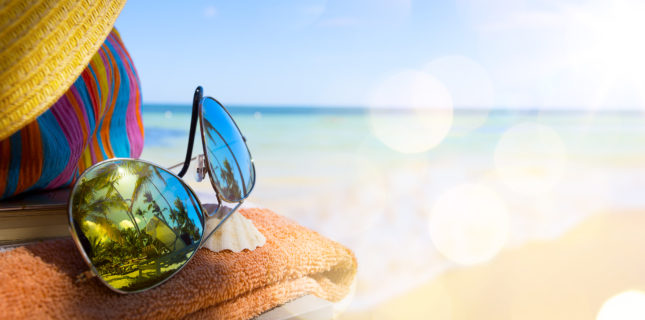
UV? Not me!
Exposure to damaging UV is no laughing matter. Unfortunately, patients don’t always take it seriously. And, they rarely understand how damaging it can be.
Here’s a look at comments you’ve likely heard, and why they don’t fly when it comes to patients caring for their eyes.
Feel free to pull from this for social media posts (or anything else). This is definitely the time of year to deliver a strong UV message to the sun bunnies in your practice.
Tip: Explain to parents that the not-yet-fully-developed eyes of kids under age 10 allow 60% more UV to penetrate the eye than would that of an adult.
I DON’T NEED SUNGLASSES ON BECAUSE…
“It’s late in the afternoon.”
FACT: The higher the sun moves in the sky, the more damaging its rays. As a result, UV exposure to the eyes in strongest between 2 and 4 pm. Exposure can be reduced by 60% by avoiding peak hours. Source: AMC Cancer Research Center
“I’m not in the sun. I’m swimming and playing in the water.”
FACT: Water reflects up to 100% of UV. Source: World Health Organization
“I work in the city, and with all the buildings, the sun isn’t strong.”
FACT: Your eyes are never protected outdoors. Even concrete reflects up to 25% of UV light. Source: The Vision Council
“My kids will just lose them, so why bother buying them sunglasses?”
FACT: The not-yet-fully-developed eyes of kids under age 10 allow 60% more UV to penetrate the eye than would that of an adult. Source: The Skin Cancer Foundation
“I wear a hat when I hike in the mountains.”
FACT: The intensity of UV radiation increases 3% for every 1,312 feet in altitude. At 8,000 feet, for example, UV radiation exposure is almost 20% more than at sea level. A hat is great, but it won’t protect your eyes. Source: American Optometric Association
“I’m more worried about blue light when my kids use digital devices than UV when they’re playing outside.”
FACT: Both are a concern, but the greatest source of blue light is the sun, not digital devices. Unfortunately, only 4% of consumers know that. Source: Transitions Optical
“It’s easier to send the kids outside in the snow because they don’t need sunglasses.”
FACT: “Wrong! Up to 85% of UV is reflected by snow.”
SUMMER SOLUTIONS
So, what can you do to protect your family’s eyes in the summer sun? Here are just a few products designed to do that regardless of the time of year:
• Transitions lenses protect from both, including 100% of UV radiation.
• Shamir Blue Zero absorbs just the right percentage of blue light and provides UV protection by effectively absorbing harmful UVA and UVB rays. It’s suitable for wearers of prescription or plano lenses.
• Shamir Attitude III, a sun lens designed to provide maximized visual comfort for sport and outdoor needs. It’s right for any frame — flat or wraparound — and for any activity — from extreme sports to casual wear.
How do you explain the importance of sunwear in all conditions to your patients? Tell us about it and share in the conversation on Facebook here.
Comments are closed.







